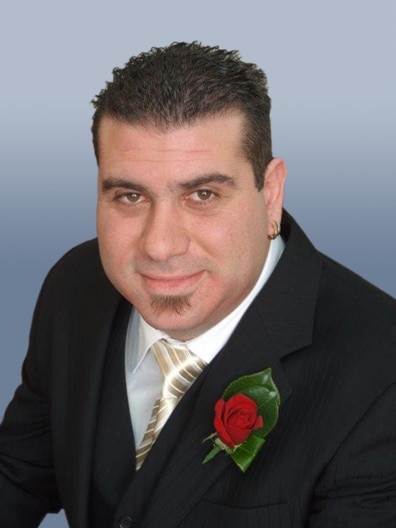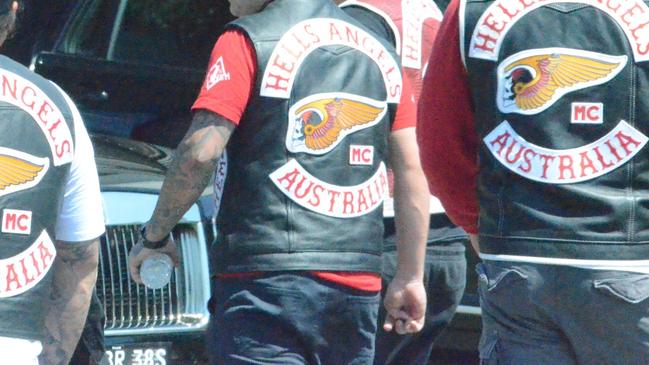Detective Heath Lienert reveals inner workings of the Hells Angels in Jason De Ieso murder trial
A bikie expert who gave evidence in the mega murder trial of Jason De Ieso has revealed the gang secrets of Adelaide’s Hells Angels.
Police & Courts
Don't miss out on the headlines from Police & Courts. Followed categories will be added to My News.
With their tendrils stretched across Adelaide, the Hells Angels North Crew were a force to be reckoned with in 2012.
But their presence was under the careful watch of police as they rolled in groups through nightclubs, boxing matches and tattoo parlours, becoming involved in a trail of violence which culminated in the gangland murder of innocent man Jason De Ieso on November 21, 2012.
His murder was the apex of a soaring gang war which had its roots in the everyday business of the club which continues to exist to this day.
READ MORE ON THE JASON DE IESO TRIAL
Fresh details: SA’s mega Hells Angel-linked murder explained
Inside the bikie war: The events that led to De Ieso’s murder
Guilty: Who are the bikie-linked men who killed Jason De Ieso
SA Police Detective Senior Sergeant Heath Lienert gave evidence during the trial of eight bikie-linked men charged with Mr De Ieso’s murder, revealing the inner workings of the Hells Angels and their rivals the Finks.
The trial resulted in the convictions of brothers Husain Alzuain, 36, of Goodwood, Mohamed Alzuain, 32, of Mile End and Musa Ali Alzuain, 30, of St Morris, along with Daniel Mark Jalleh, 34, of Clovelly Park, Ross William Montgomery, 38, of Andrews Farm, Kyle Lloyd Pryde, 35, of Adelaide and Nicholas Sianis, 36, of Beverley.

The jury was unable to reach a verdict on Seywan Moradi, 36, of Walkley Heights, who has consistently maintained his denials of wrongdoing.
Detective Lienert told the jury the origins of the violence between the rival groups – which spanned 18 months before Mr De Ieso’s murder – was illogical, even to the members of the gangs themselves.
“Most of the membership probably wouldn’t understand the background to the conflict,” he said.
“If you asked individual members they would not be able to tell you … some would. There was no rhyme or reason.”
Detective Lienert told the court the other gangs with a presence in South Australia currently included the Rebels, Comanchero, Gypsy Jokers, Bandidos, Descendants and Rock Machine – a very similar landscape to 2012 but back then Rock Machine did not exist in the state and the Bandidos “had a much lesser presence”.
The Hells Angels began in California in 1948 before beginning their international expansion into New Zealand in 1961. The gang expanded into Australia in the 1970s and by 2012 there were three chapters in Adelaide, known as the North Crew, Dead End Crew and Adelaide chapter
In May 2012, six months before Mr De Ieso’s murder, Detective Lienert said there were 27 Hells Angels members in SA and nine gang “prospects”. There were nine known fully patched North Crew members and four prospects. Their former Mansfield Park clubhouse was known as “The Restaurant” or “The Rest” among members.

Detective Lienert testified that joining an outlaw gang was a rigorous and lengthy process. To join, prospective members must have a fully traceable history. Those wanting to join the Hells Angels first become a “hangaround” and must achieve 75 per cent of member votes before becoming a club “prospect”.
After a year serving as a “prospect”, a position subservient to fully patched members, a 100 per cent vote is required for membership to be confirmed.
“If a prospect was asked to do something the expectation would be that he would have to do whatever was asked of him, regardless of the time of day or what was going on in that person’s personal life,” Detective Lienert said.
“It could be quite simple, that the person needs something to eat, something for their child, a message run to somebody … it could be quite a menial task.”
The gangs are governed by a book of “World Rules” which prevent members from talking to police except under strict conditions. The rules also state that “club business is not to be discussed outside the club”, there must be at least six members per chapter and meetings cannot be recorded.
Only full gang members can wear club colours, known as a “patch” – gang insignia including the Hells Angel “death head” and the words Hells Angels on “rockers” that are attached to gang vests. A non-member caught wearing membership gear “can be seriously assaulted”.
“It’s very guarded – they really protect the wearing of that vest. It’s almost sacred to them. So when dealing with them as a police officer or a person in the public you need to be very careful about touching that vest,” Detective Lienert said.

Hangarounds can only wear supporter wear, such as clothes bearing “Support 81”, which correspond to the letters HA in the alphabet. Only full members can get Hells Angels or death head tattoos.
The gang holds weekly meetings, known as “Church”, and members are required to put their loyalty toward the gang above “everything” else – including partners, families and work.
Detective Lienert said consequences for breaching any rules were varied and include fines, suspensions or being thrown out of the gang. Violence is accepted and used as discipline.
“They need to be 100 per cent devoted to the club … put the club above all else,” he told the court.

“That extends out to the expectation to engage in violence, particularly to protect the reputation of the club which is to be feared and that they are a strong, big club.”
He said if the club or a member felt threatened, disrespected or embarrassed “they would be required to take some action so make sure that person was dealt with”.
He said membership suspension was sometimes known as “patch in a box” which “essentially means that your membership is stopped for a period of time and your patch is taken off you”. Members can earn patches back, or can face expulsion.
Anyone who leaves the gang must hand back their colours. Those who leave on good terms would need to get a tattoo indicating “left” and the date they left next to the club emblems.
If the separation is not amicable, a member would be required to black out their tattoos. If a former member does not comply, Detective Lienert said “it may be removed for them”.
Detective Lienert said other outlaw motorcycle gangs, including the Finks, had similar rules to the Hells Angels. He said membership of the Finks had been “more fluid” over the years and in 2013, they had patched over to the Mongols.
In 2012, he said police records indicated there were about 45 Finks members and prospects, while today both the Hells Angels North Crew and the Finks remain fixtures in Adelaide’s bikie scene.




